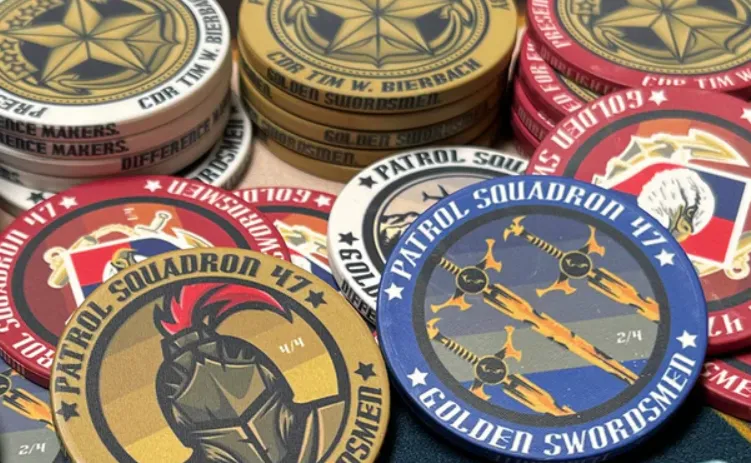What Are Custom Challenge Coins?
Custom challenge coins are specially designed to represent a particular organization, event, or achievement. They are often used as tokens of recognition, morale boosters, and symbols of camaraderie. The concept of challenge coins has a rich history, dating back to the military, where they were used to signify membership and honor bravery.
For organizations looking to create unique and meaningful tokens, exploring the world of custom challenge coins can provide a wealth of creative options and opportunities for recognition.
Why Order Custom Challenge Coins?
Ordering custom challenge coins offers numerous benefits for organizations. They physically represent achievements and milestones, fostering a sense of unity and pride among team members. Custom challenge coins can be tailored to reflect the organization’s values, mission, and unique identity, making them a powerful tool for branding and motivation. Additionally, these coins can be used to recognize exceptional performances, commemorate special events, or even as promotional items to enhance visibility and prestige.
Steps to Ordering Custom Challenge Coins
Step 1: Define the Purpose
Before starting the design process, it’s essential to define the purpose of the custom challenge coins. Consider what the coins will represent, who will receive them, and how they will be used. This clarity will guide the design and production process, ensuring the final product meets your organization’s needs.
Step 2: Design Your Coin
The design phase is a critical step in creating custom challenge coins. Work with a professional designer or use online design tools to represent your coin visually. Incorporate logos, text, colors, and imagery that reflect your organization’s identity and the coin’s purpose. The design should be simple yet impactful, ensuring the coin is visually appealing and easily recognizable.
Step 3: Choose Materials and Finishes
Bronze, silver, and gold are just a few materials that can be used to make challenge coins. Every material has varying levels of visual appeal and durability. Take into account the coin’s finish as well, such as polished, antique, or matte. Choosing materials and finishes that complement your organization’s aesthetic and financial constraints is crucial because these decisions will impact the coins’ overall appearance and feel.
Step 4: Select a Reputable Manufacturer
Choosing a reputable manufacturer is crucial to ensure the quality and accuracy of your custom challenge coins. Research potential manufacturers read reviews, and request samples. Look for manufacturers with experience producing custom challenge coins and a record of delivering high-quality products. This step will ensure that your coins are made to your specifications and delivered on time.
Step 5: Place Your Order and Review Proofs
Once you’ve selected a manufacturer, please place your order and provide them with your design specifications. The manufacturer will typically provide digital proofs or physical samples for your review. Carefully examine these proofs to ensure the design, materials, and finishes meet your expectations. Request adjustments if needed before giving final approval for production.
Design Tips
Creating an effective design for your custom challenge coins requires thoughtful consideration of several elements. First, prioritize simplicity to ensure the design is clear and recognizable, even on a small surface. Utilize contrasting colors to enhance visual appeal and readability. Consider incorporating meaningful symbols or imagery that align with your organization’s identity and values. For example, including the logo, motto, or significant dates can add a personal touch to the coins. Working with a professional designer can also bring your vision to life, ensuring a polished and impactful final product.
Choosing Materials and Finishes
The longevity and aesthetic appeal of your personalized challenge coins are greatly influenced by the selection of coatings and materials. Bronze, silver, and gold are common materials with varying aesthetic appeal and durability. Because it is reasonably priced and long-lasting, bronze is a popular option for a timeless and traditional style. Silver and gold provide a more premium feel and can signify higher levels of achievement or distinction.
Finishes such as polished, antique, and matte can further enhance the appearance of the coins. A polished finish offers a shiny and reflective surface, while an antique finish provides a vintage look. Matte finishes, on the other hand, give a more subdued and modern appearance. When selecting materials and finishes, consider the intended use and budget to make the best choice for your organization’s needs.
Uses for Custom Challenge Coins
Custom challenge coins have many applications beyond their traditional military use. In the corporate world, they can recognize employee achievements, celebrate milestones, and promote team building. Schools and educational institutions can use challenge coins to reward academic excellence, commemorate graduations, and foster school spirit. Additionally, community organizations, sports teams, and non-profits can use custom challenge coins to acknowledge contributions, build camaraderie, and raise awareness.
Caring for Your Challenge Coins
The longevity and look of your personalized challenge coins depend on proper maintenance. Store your coins in a cool, dry location to avoid tarnishing and moisture damage. Steer clear of harsh temperatures and intense sunshine, which might lead to degradation and discoloration. When handling your coins, wear clean, soft gloves to stop oils and debris from rising to the surface. To shield your coins from scratches and other potential harm, you should also consider showcasing them in protective cases or frames.
By following these care guidelines, you can ensure that your custom challenge coins remain pristine and serve as cherished symbols of recognition and achievement for years.
